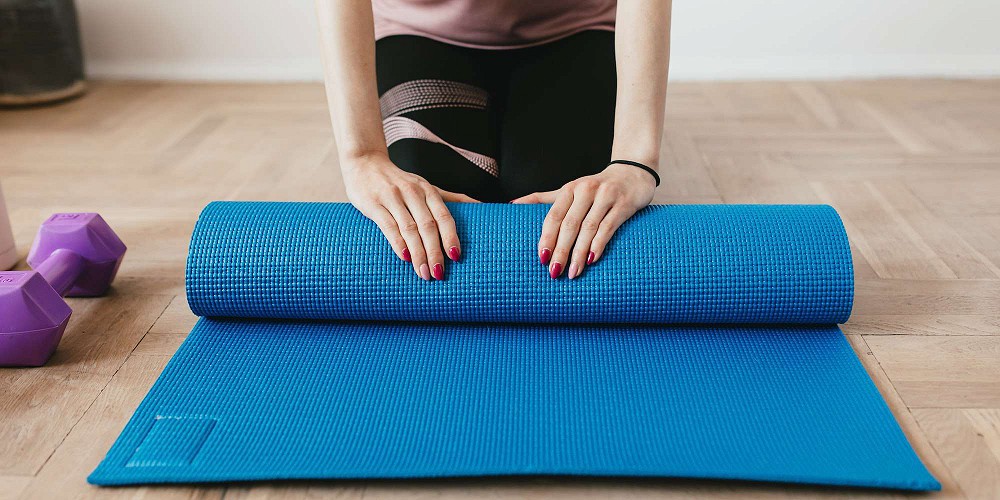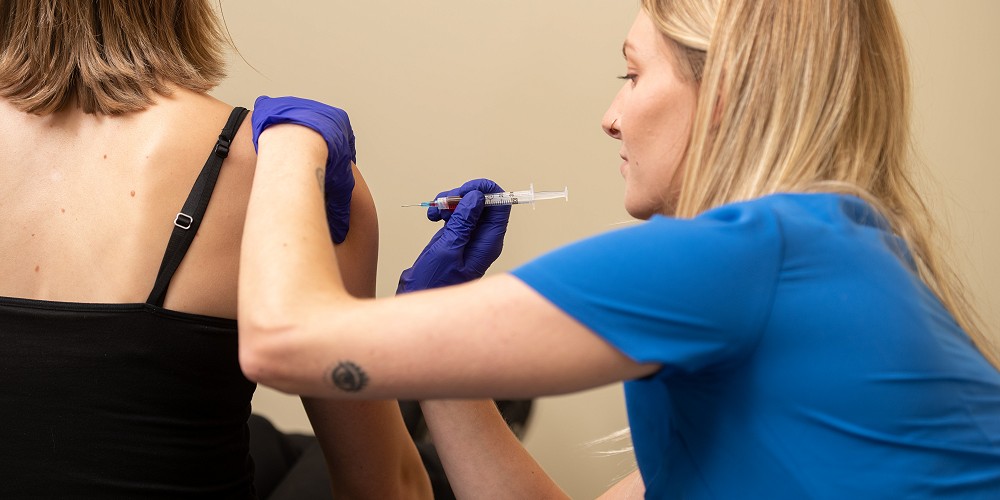Can Poor Posture Cause Jaw Pain?
Article by Anna Kania
Posture is the position in which we hold our bodies while standing, sitting, or lying down. What does it have to do with jaw pain?

Good posture is the correct alignment of body parts supported by the right amount of muscle tension against gravity.
Without posture and the muscles that control it, we would simply fall to the ground!
Good posture helps us stand, walk, sit, and lie in positions that place the least strain on supporting muscles and ligaments during movement and weight-bearing activities.
What is Poor Posture?
Poor posture can present in several ways:
- Rounded and elevated shoulders and a pushed-forward head position. This position places stress on the spine between the top of the neck and skull and the base of the neck and upper shoulders. There is a reduction in the stability of the shoulder blades resulting in changes to the movement pattern of the upper extremities.
- Forward tilting of the hips, an increase in the curve of the lumbar spine, and a protruding stomach. This position places stress over both the hip joints and lower back. Poor posture can lead to excessive strain on our postural muscles and may even cause them to relax, when held in certain positions for long periods of time.
Testing Your Posture
What does proper posture look like?
Use the “wall test” to find out:
- Stand so that the back of your head, your shoulder blades and your buttocks touch the wall, and your heels are 2 to 4 inches from the wall.
- Put a flat hand behind the small of your back. You should be able to just barely slide your hand between your lower back and the wall for a correct lower back curve.
- If there’s too much space behind your lower back, draw your bellybutton toward your spine. This flattens the curve in your back and gently brings your lower back closer to the wall.
- If there’s too little space behind your lower back, arch your back just enough so that your hand can slide behind you.
- Walk away from the wall while holding a proper posture. Then return to the wall to check whether you kept a correct posture.
How is Posture Related to Jaw Pain?
The body functions optimally when all of the joints, bones, and muscles are properly aligned.
If you routinely slouch in your chair or spend your days hunched over a computer, you are retraining your body to hold itself in a less-than-ideal position. Poor posture has a domino effect, as your misaligned spine can cause your head to protrude forward.
A forward head posture may strain the neck and jaw muscles causing jaw pain, fatigue and popping in your jaw, as well as difficulty opening your mouth, headaches and neck pain.
Forward head posture actually places the condyles of the jaw deeper into their sockets, which may be a source of pain.
Slouched sitting from the pelvis up results in forward head posture as a way for the body to counter balance itself. This posture also creates altered length-tension relationships of the muscles attached to the jaw and can trigger hypertonous (increased tone or contraction) activity of some of those muscles that compress the jaw
Imbalanced muscle forces around the jaw, including the suprahyoid muscles under the chin on the front side of the neck that open the jaw, are usually weaker compared to the masseter and temporalis, which close the jaw.
The correction of this muscle imbalance to restore proper length tension relationships has a great effect on reducing pain, clicking, and deviation of jaw movement.
How to Improve Your Posture
For TMJ (temporomandibular joint - aka jaw) disorder caused by poor posture, you must first start standing and sitting straight so that the rest of your body will align properly, including your jaw.
Correct standing posture involves keeping your shoulders back and your chest forward, making sure that you lengthen your spine and do not put your chin forward.
To sit properly, hold your upper body as you would in the correct standing position, making sure that your buttocks touch the back of your chair and that your weight is distributed evenly on the hips.
Other Factors Related to Jaw Pain
Bad posture can also be caused by foot problems, including flat arches or hyperpronation, as well as wearing high heels or other types of non-supportive footwear. Adding custom arch supports or insoles to your shoes can help you stand straighter, and choosing more comfortable and supportive footwear will also benefit your posture.
Many people have found physical therapy, professional massage, Pilates, and yoga to be helpful in releasing muscle tension and retraining the spine to stay in alignment.
Sometimes, to help reposition your jaw, your dentist can create an oral splint that will hold your bite in the ideal position to reduce stress on the surrounding muscles.
Often, the correction of forward head/rounded shoulders posture will normalize the head, neck, and facial musculature, and eliminate the jaw pain.
References
- https://www.mayoclinic.org/healthy-lifestyle/adult-health/in-depth/posture-alignyourself- for-good-health/art-20269950
- Orofacial pain prospective evaluation and risk assessment study–the OPPERA study. Maixner W, Diatchenko L, Dubner R, Fillingim RB, Greenspan JD, Knott C, Ohrbach R, Weir B, Slade GD. J Pain. 2011 Nov;12(11 Suppl):T4-11.e1-2.
- https://www.practicalpainmanagement.com/pain/maxillofacial/tmj/tmd-facial-painforward- head-posture
You May Also Like...
-
 ArticleView Post
ArticleView PostIs Foam Rolling Worth It?
Do you start or finish your workout routine with a bit of foam rolling? Read here: this article may change your mind.
-
 ArticleView Post
ArticleView PostTruth, Reconciliation, and the Medicine Wheel
Feeling disconnected from your ideal health? Learn how to regain your holistic health and well-being.
-
 ArticleView Post
ArticleView PostInjectable Therapy (Part 1 of 2): Prolotherapy, PRP, and Cortisone
Nearly 8 million Canadian residents are living with the diagnosis of chronic pain1. Living with pain can impact one’s abilities to participate in activities of daily living—such as work, school, and socialization. There are many possible branches of treatment for chronic pain, and this article highlights the positive role that injectable therapies can have.